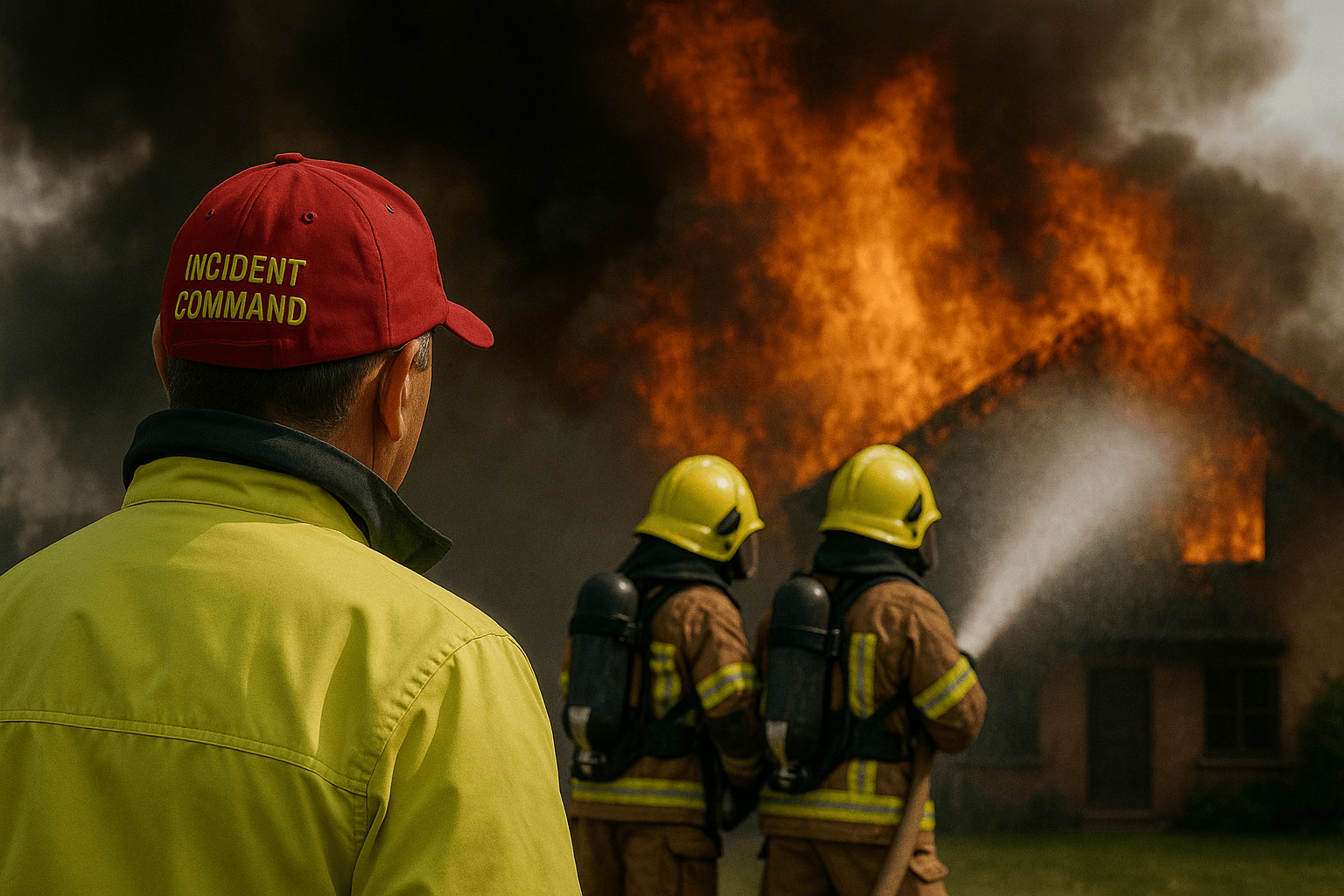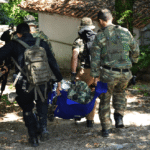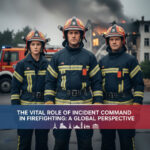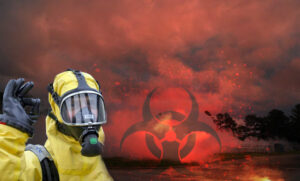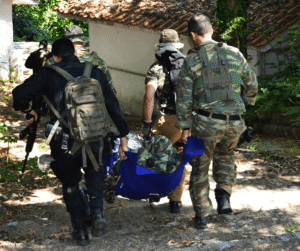
In emergency management, especially firefighting, the concept of incident command is essential. Incident command refers to the standardized methods and systems used to direct resources and personnel during emergencies, ensuring efficient and effective operations. This structured approach is vital in high-stakes situations where lives are at risk, directly impacting the safety of both firefighters and civilians.
Incident command systems have evolved significantly, adapting to new challenges and incorporating lessons from past incidents. This article examines the multifaceted role of incident command in firefighting, explores global practices, emphasizes its importance in emergency management, and discusses future trends.
Section 1: Understanding Incident Command
1.1 Definition of Incident Command
Incident Command is a standardized approach to emergency management. The Incident Command System (ICS) was primarily developed in the United States in the 1970s to improve the organization and efficiency of managing wildfires and other emergencies. ICS provides a flexible framework that adapts to incidents of any size or complexity.
The ICS allows for the integration of facilities, equipment, personnel, procedures, and communications within a common organizational structure. This system promotes effective collaboration among various agencies, ensuring a unified approach to managing the incident.
1.2 The Structure of Incident Command
The typical ICS structure includes several key roles and responsibilities:
- Incident Commander (IC): Responsible for all aspects of the response, including the safety of responders and the public, strategic decision-making, and overall operations. The IC authorizes resource allocation and makes critical decisions.
- Operations Section Chief: Manages all tactical operations at the incident scene, coordinating firefighting efforts and ensuring effective resource deployment.
- Planning Section Chief: Collects, evaluates, and disseminates incident information. This role also involves developing the Incident Action Plan (IAP), which outlines objectives and strategies.
- Logistics Section Chief: Manages resource and personnel support, ensuring equipment, supplies, and facilities are available to meet operational needs.
- Finance/Administration Section Chief: Oversees the financial aspects of the response, including tracking expenses, managing contracts, and ensuring regulatory compliance.
This hierarchical structure facilitates clear communication and accountability, which are crucial for effective incident management.
1.3 Key Functions of Incident Command
- Leadership: An effective IC must demonstrate strong leadership qualities: clear communication, inspiring confidence, and making informed, rapid decisions. They must be skilled at assessing risks and adapting strategies as the situation changes.
- Decision-Making: Incident commanders face high-pressure situations requiring swift choices. They must evaluate options based on situational awareness, available resources, and potential impacts. This process often involves consulting experts and utilizing real-time data from the field.
- Resource Management: Efficient resource management is a core function. Commanders must prioritize resource allocation based on immediate needs, ensuring personnel, equipment, and supplies are utilized effectively to mitigate the incident.
Section 2: Global Perspectives on Incident Command
2.1 Similarities in Incident Command Worldwide
Despite variations in application, several core principles of incident command are universally recognized:
- Unified Command: This concept enables multiple agencies to operate cohesively. It ensures all involved organizations share a common set of objectives and strategies, minimizing confusion and maximizing effectiveness.
- Standardization: Many countries have adopted standardized protocols and frameworks, such as those from the NFPA (National Fire Protection Association) and ISO (International Organization for Standardization). These standards facilitate training, interoperability, and coordination among emergency responders.
2.2 Differences in Incident Command Systems
Significant differences exist in how incident command systems are structured globally:
- Regional Variations: Systems are tailored to local needs, resources, and governance. For instance, the U.S. ICS is widely used, while the UK’s National Incident Management System often emphasizes a more centralized approach.
- Cultural Influences: Culture impacts command structures and decision-making. Some cultures rely heavily on hierarchical structures, while others promote collaborative decision-making, affecting how orders are executed and teams interact.
- Technological Integration: Countries vary in their adoption of technology. Some utilize advanced data analytics and remote sensing technologies, while others may depend on traditional methods. This disparity affects situational awareness and responsiveness.
Section 3: The Importance of Incident Command
3.1 Enhancing Safety and Efficiency
Effective incident command enhances the safety and efficiency of operations. Research indicates that a structured system can significantly reduce the risk of injuries and fatalities for both responders and the public.
- Risk Reduction: Studies show that when ICS is implemented, the likelihood of an incident escalating decreases. For example, the use of ICS during the 2018 Carr Fire in California enabled rapid resource deployment, helping to contain the fire and protect lives.
- Successful Outcomes: Case studies consistently demonstrate the critical role of incident command in success. The response to the 9/11 attacks showcased how unified command facilitated crucial coordination among numerous agencies for effective rescue and recovery.
3.2 Coordination Among Agencies
Incident command is essential for effective coordination among emergency response agencies:
- Inter-agency Cooperation: Modern emergencies often require collaboration among fire, police, medical services, and other groups. Incident command ensures all parties work toward shared objectives, maximizing response effectiveness.
- Case Studies: The response to Hurricane Katrina in 2005 highlighted the dangers of a lack of coordinated incident command, where poor communication and collaboration contributed to disaster challenges. Conversely, recent Australian wildfires showed the effectiveness of multi-agency coordination facilitated by incident command.
3.3 Training and Preparedness
Ongoing training in incident command ensures that personnel are prepared for real-life incidents:
- Ongoing Training: Regular training is essential for commanders and teams to stay updated on best practices and new technologies. Programs include classroom instruction and hands-on simulations.
- Importance of Drills: Realistic drills and exercises simulate emergency scenarios, allowing personnel to practice incident command roles and decision-making under pressure. These opportunities build confidence and proficiency.
Section 4: The Future of Incident Command
4.1 Emerging Technologies
Advancements in technology are expected to shape the future of incident command:
- Impact of Technology: Technologies like drones for aerial reconnaissance, AI for predictive analytics, and enhanced communication tools are revolutionizing incident command. These innovations provide unprecedented situational awareness and data-driven decision-making capabilities.
- Enhanced Situational Awareness: With real-time data collection and analysis, commanders can assess evolving situations more accurately and respond proactively. The integration of Geographic Information Systems (GIS), for instance, allows for better incident mapping and resource allocation.
4.2 Evolving Challenges
Incident command systems must adapt as the landscape of emergencies changes:
- New Challenges: Climate change, urbanization, and increasing susceptibility to natural disasters require innovative strategies. For example, urban wildfires necessitate different tactics than those used in rural settings.
- Adaptive Strategies: Incident command must evolve to address these challenges, incorporating lessons learned and adapting training programs to prepare responders for future incidents.
4.3 Collaborative Approaches
Collaboration will be critical in shaping the future:
- International Collaboration: As emergencies become more complex and interconnected, sharing best practices, resources, and knowledge internationally will enhance global firefighting efforts.
- Shared Resources: Developing frameworks for sharing resources and expertise across borders is vital for responding to major incidents. Collaborative training initiatives can improve the overall effectiveness of incident command worldwide.
The role of incident command in firefighting is indispensable, providing a structured, effective approach to emergency management. By enhancing safety, facilitating coordination, and promoting ongoing training, these systems significantly improve outcomes.
Moving forward, investing in technology and collaboration is essential to adapt to the evolving challenges facing emergency responders. Embracing innovation and fostering international partnerships will enhance the effectiveness of incident command systems, ultimately leading to safer communities and more effective emergency management practices.
References :
- National Fire Protection Association (NFPA): NFPA. (2017). NFPA 1500: Standard on Fire Department Occupational Safety and Health Program. Retrieved from NFPA website NFPA. (2018). NFPA 1026: Guide for Fire Department Safety Officer. Retrieved from NFPA website
- International Organization for Standardization (ISO): ISO. (2011). ISO 22320: Societal security — Emergency management — Guidelines for the development of incident command systems. Retrieved from ISO website
- U.S. Department of Homeland Security: U.S. Department of Homeland Security. (2015). National Incident Management System (NIMS). Retrieved from FEMA website
- Emergency Management Agency Reports: Federal Emergency Management Agency (FEMA). (2020). Incident Command System (ICS) Resources. Retrieved from FEMA website
- Scholarly Articles: Waugh, W. L., & Streib, G. (2006). Collaboration and Leadership for Effective Emergency Management. Public Administration Review, 66(2), 131-140. doi:10.1111/j.1540-6210.2006.00663.x Comfort, L. K., & Haase, T. W. (2006). Managing Intergovernmental Responses to Catastrophic Events. Public Administration Review, 66(S1), 125-137. doi:10.1111/j.1540-6210.2006.00661.x
- Books: Quarantelli, E. L. (1997). Disaster Crisis Management: A Summary of Research Findings. In Managing Disaster: Strategies and Policy Perspectives (pp. 3-30). Westport, CT: Greenwood Press. Dynes, R. R., & Quarantelli, E. L. (1976). Community Behavior in Disasters: A Review of the Literature. Disaster Research Center, University of Delaware.
- Case Studies: FEMA. (2019). After-Action Report: 2017 Hurricane Season. Retrieved from FEMA website National Institute of Standards and Technology (NIST). (2018). Report on the Collapse of the World Trade Center Towers. Retrieved from NIST website
- Government Reports: U.S. Government Accountability Office (GAO). (2019). Disaster Response: Actions Needed to Improve Disaster Recovery and Response. Retrieved from GAO website
- Industry Publications: International Fire Chiefs Association. (2018). Fire Chief’s Guide to Incident Command. Retrieved from IAFC website
- Online Resources: FEMA. (2021). Incident Command System Overview. Retrieved from FEMA website


